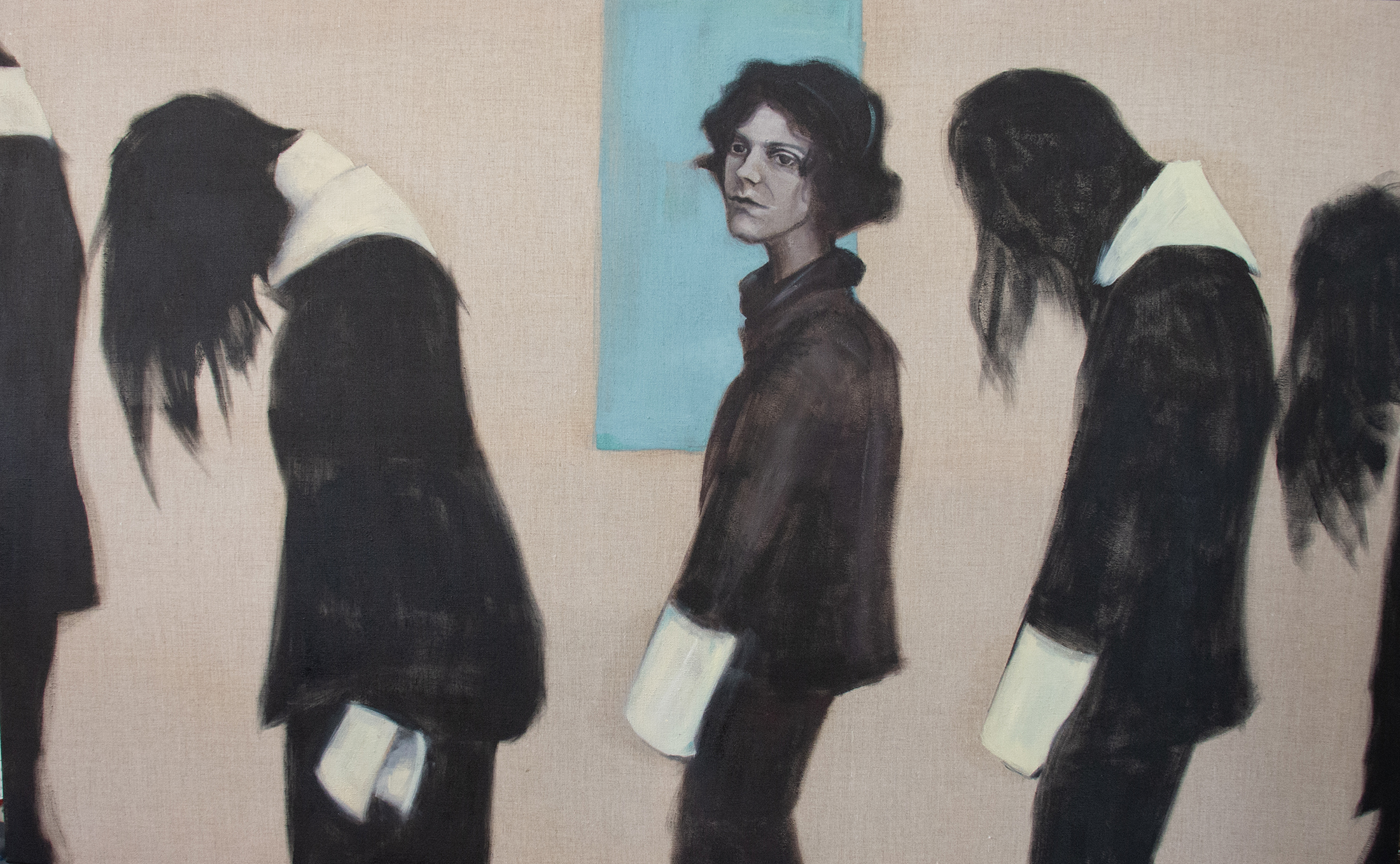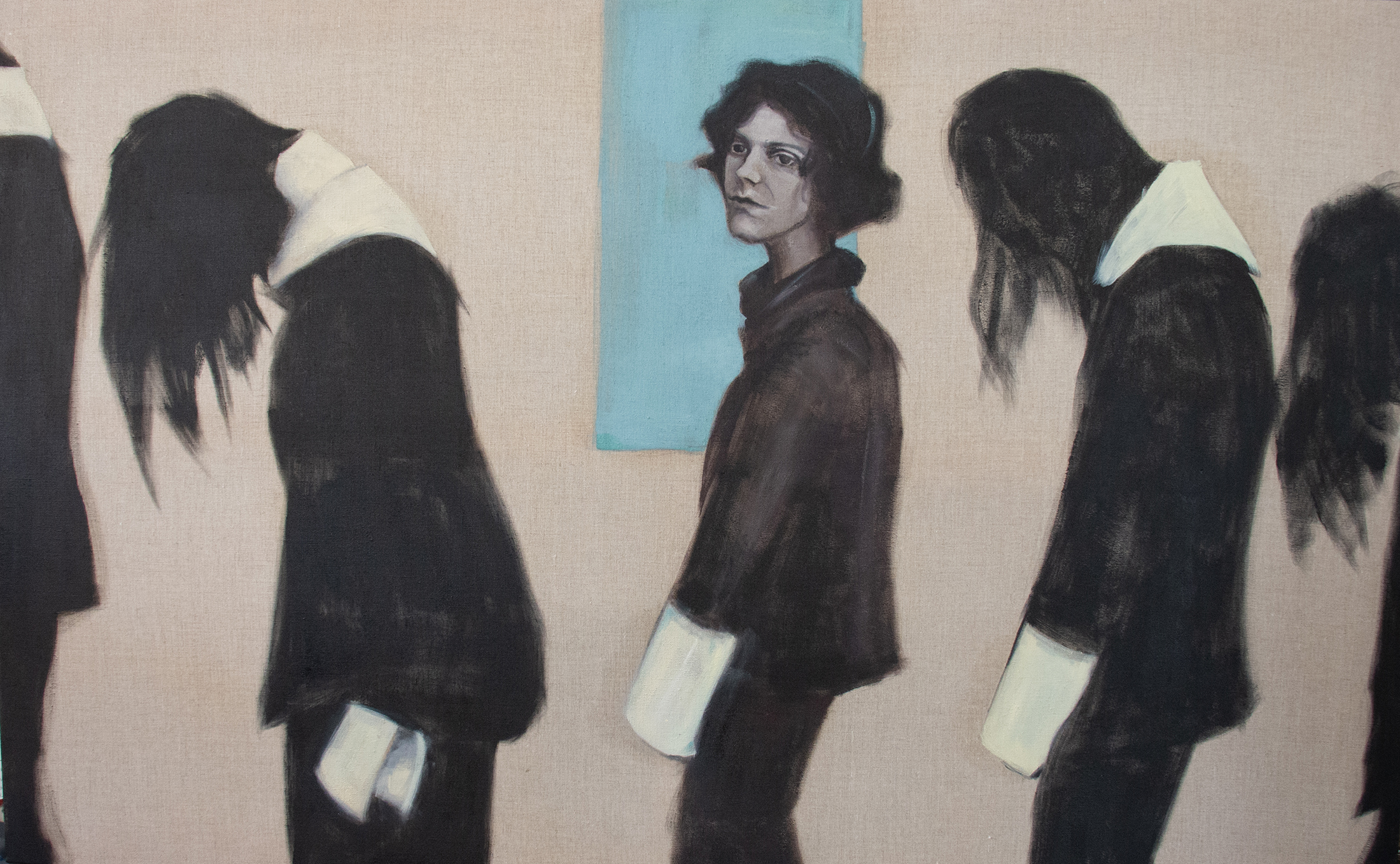
Allison Gobbell
Fine Art – Painting / Master of Fine Arts (MFA)
School of Fine Art
I begin with a figurative image in my head. These images usually stem from something I have been contemplating for a while; some kind of issue that’s been in my thoughts.
I write down the basic idea before I forget it and if possible, make a quick sketch. I do a photo shoot for references and combine images on Photoshop. After achieving a rough working reference, a sketch is followed by a color study, and then a small painting which leads to a larger final painting. I sometimes use a wax medium, or an acrylic modeling paste to build up a thick impasto texture in the early stages of a painting, applying it with brushes, palette knives and sundry tools to create a surface with history. This sets the stage, a sort of mental landscape, for the figure(s) to appear.
My interest is drawn into variation and a bit of mystery in this layered atmosphere. I enjoy a muted palette and matte surfaces, but am mindful of
maintaining a richness to my colors that directs the mood and tone of each piece. The images keep growing and changing at each stage. I feel compelled
to revisit the topic again and again at all stages, until the image is fully realized. It is months before I can view the final image somewhat objectively, without emotions clouding my judgment.
Painting is a way for me to process the world – it’s struggles and victories – and to show my feelings and thoughts by simplifying a larger issue and portraying it, containing it if you will, on a two-dimensional surface. I think as humans we all grapple with big and small issues, and by portraying these images and ideas I can reach out to people through my work to say, “it’s okay, you are not alone. Take time to breathe and reflect, it’s going to be alright.” That’s the mother in me, trying to make everything better. My small way to bring comfort and hope.
Work
View Student Work as a:
List
Grid

View Student Work as a:
List
Grid

